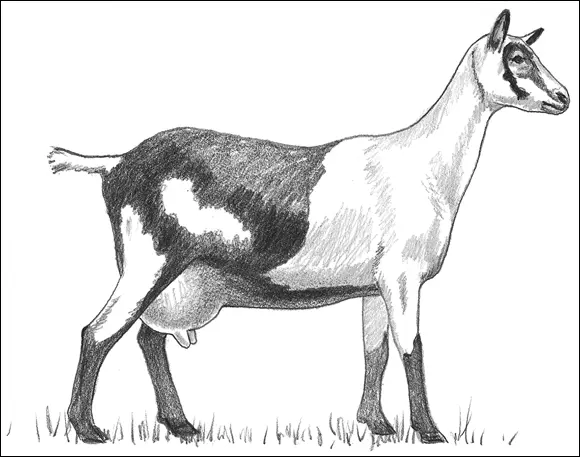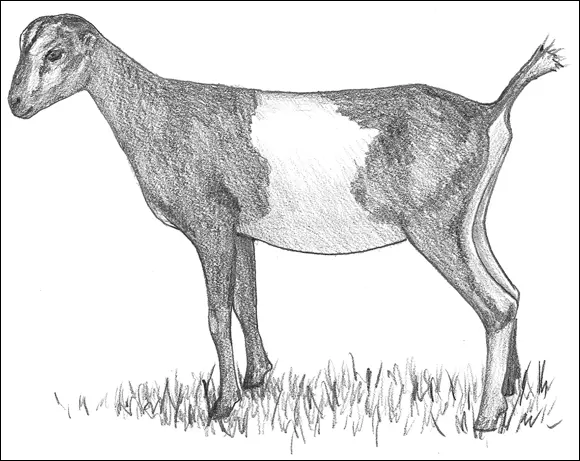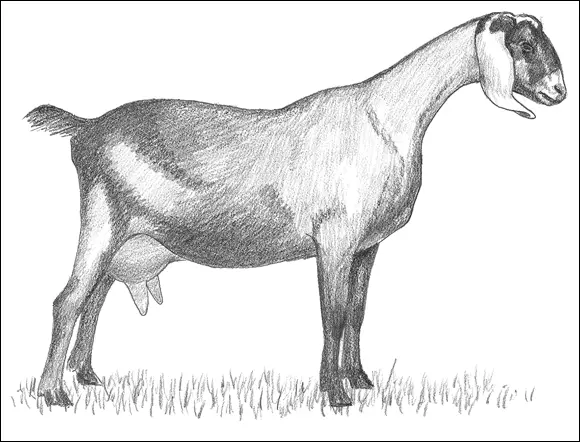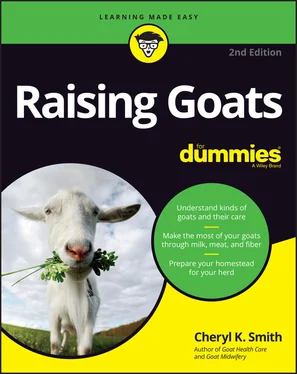1 ...8 9 10 12 13 14 ...20 Neither of these registries recognizes the mini crossbreeds that have captured the hearts of urban goat owners, so two new registries have sprung up: The Miniature Goat Registry (TMGR) and the Miniature Dairy Goat Association (MDGA).
In addition, the Canadian Goat Society (CGS) registers purebred dairy goats, which also are accepted by the major dairy goat registries noted earlier.
Dairy goats provide milk, of course, and if you’re interested in a home supply of goat meat, your dairy goats can serve that purpose, too. Unfortunately, if you want fiber and milk, most dairy goats won’t work because their coats generally are too short, but fiber goats usually don’t produce a lot of milk.
In the upcoming sections, I give you an idea of what each of the standard dairy goats looks like and some of their traits. If you decide that you just have to have one of these breeds but can’t find it in your area, see Chapter 7, which tells you about sources for finding goats.
Standard dairy goat breeds
The standard breeds are a good choice if you want dairy goats that produce a lot of milk and you have the space: ADGA and AGS require that each of the breeds reaches a minimum, but not a maximum, height and weight. The minimum height for does ranges from 28 inches to 32 inches, depending on breed. The minimum buck heights are 30 to 34 inches.
The standard breeds produce an average of 5 to 8 pounds of milk each day for 10 months. This is the equivalent of approximately 2½ quarts to a gallon per day. Dairy goats’ milk production starts out lower, gradually increases throughout lactation, and then goes down again.
If you think you want standard dairy goats, deciding which one is for you depends mainly on size, the look and personality that strikes your fancy, and what is available to you. The upcoming sections tell you about the standard dairy goat breeds and some of the characteristics that define them.
Alpines, also known as French Alpines, hail from the Alps. They are large goats that have erect ears and come in a variety of colors and patterns. They’re friendly and hardy, and the wethers (castrated males) are a favorite for use as pack animals. Many goat milk dairies have Alpines in their milking string because they consistently produce a lot of milk and often can be milked through without rebreeding. Figure 3-1 shows an Alpine goat.

FIGURE 3-1:An Alpine goat.
LaManchas look earless, but they actually have very small ears. The ears are of two types: gopher ears and elf ears. (Figure 3-2 shows a LaMancha with gopher ears.) Gopher ears are very small and rounded; elf ears are less than two inches long and turn up or down. People tend to either love or hate the looks of the LaMancha.

FIGURE 3-2:A LaMancha goat with gopher ears.
LaManchas descended from the Spanish Murciana and Spanish LaMancha goats brought to the United States from Mexico for meat and milk. They first got recognition as a separate breed in the early 1950s and are fast becoming a very popular breed. They come in a variety of colors and patterns and are very friendly. I have also found them quite curious, with an ability to get to food regardless of where you put it!
Nubians (see Figure 3-3) are one of the most popular breeds. They have long, floppy ears and a rounded (Roman) nose, and they have been bred to be very large. Their milk has a high butterfat content, and they produce a lot of it — which makes them a good choice if you want to make cheese. Because of their large size, they make good meat goats, too.
Unfortunately, Nubians also are known for the loud, annoying cries that many of them make. The cries make them undesirable in some neighborhoods and on some farms.

FIGURE 3-3:A Nubian goat.
G-6-S GENE MUTATION: A PERSISTENT DEFECT IN NUBIANS
The G-6-S gene mutation was first discovered in 1987. Further investigation showed that about 25 percent of Nubians carry the gene, which results from a single mutation. It affects only Nubians and Nubian crosses. Carriers (N/G genotype) aren’t affected but can transmit the gene to 50 percent of their offspring. Carriers can make great pets, packers, and brush control goats.
Goats with the gene mutation lack the enzyme G-6-S, which causes a variety of symptoms that vary in severity. Failure to grow is the main sign. In some cases, a kid starts out smaller than normal and continues to grow slowly; in others a kid grows normally for three months or so and then stops growing. Other goats seem to grow to a normal size but are found to actually be small in comparison to other goats in that bloodline. Other signs include a lack of muscle mass, a “slab-sided” appearance or a “blocky” head. They seem to have compromised immune systems, experience reproductive problems and, in some cases, become deaf or blind. The longest a goat with G-6-S has been known to survive is less than four years. Death is usually caused by heart failure. Because goats with this defect can live long enough to breed, they continue to pass on the gene. Many Nubian breeders now test all breeding stock for the defect.
Oberhaslis were originally known as Swiss Alpines, a variation on the Alpine. They were eventually recognized as a separate breed with distinct markings. They have erect ears, are medium-sized, and have a reddish-brown color (chamoisee) with black markings on their backs, belly, tail, and legs. Does can also be pure black.
Oberhaslis are my favorite of the large breeds because of their sweet temperament and beautiful markings. They have good dairy character, which means they seem to like being milked.
Saanens are white or off-white in coloring and are the largest of the standard dairy goats. Sables are Saanens that aren’t white, due to a recessive gene. They have erect ears, like the Alpine, and are usually mellow and easy-going.
Sables and Saanens are known for their high milk production and are therefore often used in commercial dairies. A downside to Saanens is that their white coats show dirt and also make them more prone to sunburn.
Toggenburgs, also referred to as Toggs, are beautifully marked and range in color from fawn to chocolate brown with white markings. They resemble a medium-sized Alpine in body shape, with erect ears. The Toggenburg is a Swiss dairy goat from Toggenburg Valley of Switzerland at Obertoggenburg. They are also credited as being the oldest known dairy goat breed.
Toggs produce a moderate amount of milk but are known for long lactations. More than one person has told me that they don’t like the taste of Toggenburgs’ milk, probably because it has a low butterfat content and doesn’t taste as rich as some of the other goats’ milk.
The standard dairy goat breeds are impressive, but maybe you don’t want to be drowning in milk. With the miniature breeds, you get some of the same characteristics but in a smaller package.
Miniature breeds are relatively new to the scene but are growing in popularity. Miniature dairy goats include Nigerian Dwarves, Pygmies, and the most recent development in dairy goats in the United States: miniature, crossbred versions of the standard breeds, called minis.
Читать дальше















